The History of the Crusades
The Crusades of the Middle Ages were an almost continuous series of military-religious expeditions made by European Christians in the hope of wresting the Holy Land from the infidel Turks. From 1096 until nearly 1300, Crusaders, traveling in great armies, small bands, or alone, journeyed into the Orient to wage war against the Moslems, who had become a serious threat to Christianity. Although some went for worldly gain, it was religious faith that inspired thousands upon thousands of these “soldiers of the Cross.” When the Crusades began, Europeans were still living in the so-called Dark Ages; before they were ended, the West stood upon the threshold of the modern era. The Crusades were not wholly responsible for his progress, but none will deny that they hastened the development of our modern world.
How the Crusades Began: The Christians of Europe believed that pilgrimages to the Holy Land would guarantee the forgiveness of their sins and the healing of their sick bodies and souls. From the early 600’s Jerusalem was held by non-Christian Arabs ruling over a predominately Christian population. From Michael Haag’s “Tragedy of the Templars.” we learn that Al-Arabi, a distinguished Andalusian Muslim, says the following about Palestine:
“The country is theirs [the Christians] because it is they who work its soil, nurture its monasteries and maintain its churches.” (5)
The twist is that this was written on the eve of the First Crusade, because al-Arabi stayed in Jerusalem in the years 1093-1095. This puts many things into perspective. When the call was made for the First Crusade the plight of Palestinian Christians was continuously stressed by Pope Urban II and those who helped him preach the message. What is sometimes not realized is that Christians have been living in Palestine continuously from the earliest days of Christianity. They were by no means in the minority even after Muslim invaders imposed their rule on the land, enforcing heavy taxation of the “infidels”, and sporadically resorting to outright violence. The daily life of Palestine prior to the First Crusaders depended entirely on its Christina population, not the elite and warrior classes of different Muslim groups who were wrestling over control in the region (5).
Jerusalem was a hallowed shrine for them and for all other Moslems, as well as for Christians and Jews, the Arabs had not only let the pilgrims come and go at will but had also permitted Christians to settle and live peacefully in the Holy Land. By 1071, when the Seljuks, a less civilized and less tolerant tribe of Turks, captured the Holy City, the situation had changed. Soon the Sacred Places were being desecrated and destroyed; Christian settlers were mistreated; and pilgrims were persecuted. In the same period the Turks threatened to overwhelm the entire Byzantine Empire and then drive all Christians out of the East. Alexius the Byzantine Emperor, appealed to the Pope at Rome for aid. At a church council held at Clermont in southeastern France in November, 1095, Pope Urban II called upon the faithful to “take up the cross” in Christ’s behalf, rescue Christ’s Sepulcher from the infidels, and save the Christian Byzantine Empire.
Urban’s historic speech set in motion the whole crusading movement. Fired with religious fervor, people of all ranks clamored to join in the righteous cause that God had willed. A cross of red cloth worn upon the breast became the symbol of the departing Crusader {a word derived from the Latin crux, meaning cross}.
The First Crusade (1096 – 1099)
The People’s, or Peasant’s Crusade: By the spring of 1096, before the First Crusade was officially launched, Peter the Hermit and other wandering preachers had collected a number of motley armies, composed of peasants, vagrants, beggars, women, and children. Driven by fanatical zeal, these ignorant, disorderly, penniless crews set out from France and the Rhineland for the Holy Land – more then two thousand miles away. Three of the mobs were destroyed or scattered in Hungary, in payment for their lootings, murders, and other outrages; but in July a group led by Walter the Penniless, a poor knight, and another led by peter the Hermit finally joined forces in Constantinople forming the first Crusade.
After causing grave disturbances in the Byzantine capital, the peasants who had survived the terrible march across Europe pushed on into Asia Minor, where the Turks massacred them. Peter the Hermit, who remained in Constantinople at this time, was one of the few members of the People’s Crusade who lived to reach the heart of the Holy Land.
The Princes’ Crusade: Meantime, European princes, barons, and knights had been assembling and setting forth. From the spring of 1096 through the spring of 1097 they traveled by land and by sea toward their goal. Major groups included the French and German volunteers under Godfrey of Bouillon, Duke of Lorraine, and his brother Baldwin; Frenchmen under Raymond, Count of Toulouse, and Bishop Adhemar, the Pope’s legate; and Frenchmen and Normans under Bohemund and Tancred. These and other armies make up of wealthy nobles, humble monks, professional warriors, merchants, farm hands, vagabonds, and criminals, followed various routes to reach the common destination. And their purposes also varied. Most were inspired by religious faith, but many sought adventure, opportunity, power, or wealth.The Crusaders began crossing over into Asia Minor in May 1097, and after a long and harrowing March, spent the winter outside mighty Antioch. In June 1098, they captured the city, only to be besieged in their turn by a powerful Turkish army. Death and desertions sapped the strength of the Crusaders, and their morale collapsed; but the discovery of a spear, which they believed to be the one used to wound the crucified Christ, inspired them to rise up and overthrow the Turks. On July 15, 1099 after six weeks of siege, the weak remnants of the Christian armies captured the Holy City of Jerusalem. Covered with the blood of massacred Turks, the victors knelt at the Holy Sepulcher, thus bringing to successful conclusion the only crusade to be motivated principally by religious zeal.
After the death of Godfrey of Bouillon, who was made ruler of Jerusalem and named “Advocate of the Church of the Holy Sepulcher”, the Kingdom of Jerusalem was established with Baldwin as its monarch in 1100. To the north other European princes set up the Christian states of Edessa, Tripoli, and Antioch. Many Europeans were attracted to the East, and three religious-military orders – the Knights of St. John {Hospitalers}, the Knights Templar, and the Teutonic Knights – were formed to defend and care for the pilgrims who streamed into the Holy Land.
The Second Crusade and Third Crusade
The Second Crusade (1147 – 1149): Stirred by the new that the Christian County of Edessa had fallen to the Moslems, the French monk St. Bernard of Chairvaux called for another great expedition to the East. Louis VII, King of France, and Conrad III, the German Emperor, led this crusade, which was to poorly manage that nothing was accomplished. Nevertheless, thousands of Crusaders, traveling singly or in small bands, continued moving into Asia Minor.
The Third Crusade (1189 – 1191): In 1187 the great Moslem leader Saladin captured the Holy City with a huge Turkish army. When this news reached Europe, the Third Crusade got under way. Its leaders were the most powerful rulers of the West: the German Emperor Frederick I, called “Barbarossa” (Red Beard); Philip Augustus, King of France; and King Richard the Lion-Hearted of England. Although it was the most famous and colorful of all the military expeditions into the East, this Crusade, too, ended in failure.
Thirteenth-Century Crusades
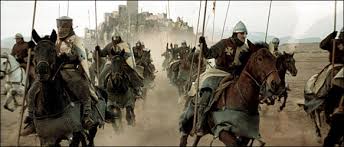 The Fourth Crusade (1202 – 1204): Called the arms by Pope Innocent III, the warriors of the Fourth Crusade determined to attack the Moslems in the Holy Land from Egypt. To reach Egypt, they needed the assistance of the ship-owners of Venice, and to obtain this assistance they had to help the Venetians crush Zara, a commercial rival of Venice on the Adriatic, and pillage Constantinople. The protests of the Pope failed to halt their attacks on these two Christian cities. As a result of the conquest of Constantinople in April 1204, the Byzantine Empire fell to the “Latins”, who held it fro more than half a century. The victories of the Fourth Crusade were purely commercial and political; the situation in the Holy Land remained unchanged.
The Fourth Crusade (1202 – 1204): Called the arms by Pope Innocent III, the warriors of the Fourth Crusade determined to attack the Moslems in the Holy Land from Egypt. To reach Egypt, they needed the assistance of the ship-owners of Venice, and to obtain this assistance they had to help the Venetians crush Zara, a commercial rival of Venice on the Adriatic, and pillage Constantinople. The protests of the Pope failed to halt their attacks on these two Christian cities. As a result of the conquest of Constantinople in April 1204, the Byzantine Empire fell to the “Latins”, who held it fro more than half a century. The victories of the Fourth Crusade were purely commercial and political; the situation in the Holy Land remained unchanged.The Children’s Crusade (1212): This tragic expedition was made by bands of French and German children, who marched to Mediterranean ports, convinced that the sea would dry up and permit them to reach the Holy Land. No such miracle occurred, and several shiploads of the children were carried into slavery in Turkish territories. The remainder perished, straggled back home, or wandered aimlessly around Europe. The pathetic story of a band of German children lost in this terrible crusade may have inspired Robert Browning’s famous poem, “The Pied Piper of Hamelin”.Later Crusades: Most of the crusades, which followed accomplished little. The Pope pushed the German Emperor, Frederick II, into leading the Fifth Crusade {1228 – 1229}. Although Jerusalem passed into Christina hands as a result of a treaty obtained by Frederick, the Turks recaptured it in 1244. The Sixth {1248 – 1254} and Seventh {1270} Crusades, led by the devout Louis IX of France, failed to liberate the Holy City, which remained in Moslem hands until World War I. The fall of Acre in 1291 put an end to Christian rule in the Holy Land. A few Christian traders remained, but the day of the Crusader and the Western conqueror and settler was past.
Trade and Commerce: During and after the Crusades trade between Italy and the ports at the eastern end of the Mediterranean were tremendously increased, and wealth was circulating as never before. By the time European nobility had begun to look upon such imports as Oriental rugs and perfumes as essentials, the growing middle class of merchants and craftsmen was demanding the new foodstuffs, such as cane sugar, rice, garlic, and lemons, and textiles, such as muslin, silk, and satin, from the East, which naturally became less expensive as the shipments increased in size. Natural, too was the growth of towns and cities in this period. Goods brought into Europe had to be distributed, and as trade increased, so did the towns and cities along the inland trade routes. The larger galleys and sailing vessels built to carry Crusaders were also used to bring luxuries of the Orient to the courts of England and Scandinavia.
The Crusades affected finance and business practice in Europe. Gold coins were minted and letters of credit came into use for the convenience of the Crusaders. To finance the expeditions, the wealthy were taxed, and serfs were allowed to buy their freedom and sometimes the land on which they worked. Thus the number of small landowners was increased, and the feudal system was weakened. Western gold was widely distributed through the purchase of supplies and Oriental wares.
Social Change and Intellectual Growth
 Growth from the Crusades: In weakening the feudal system, the Crusades stimulated the development of a new class of free farmers and townsmen. In some parts of Europe wealthy “merchant princes” arose to take the place of the many nobles who were killed in the Crusades or who settled permanently in the East; in France the monarchy was greatly strengthened by the waning of the nobles’ power.
Growth from the Crusades: In weakening the feudal system, the Crusades stimulated the development of a new class of free farmers and townsmen. In some parts of Europe wealthy “merchant princes” arose to take the place of the many nobles who were killed in the Crusades or who settled permanently in the East; in France the monarchy was greatly strengthened by the waning of the nobles’ power.
Contact with the East and new contacts among the various peoples of Europe led to the exchange of ideas, customs, and techniques. Thus the Crusades helped to break down the barriers of ignorance and isolation. During this period, interest in geography and navigation was tremendously stimulated; better maps were drawn; and more and more sea captains adopted the Arabs’ crude mariner’s compass and astrolabe. Equipped with new knowledge and urged on by their desire for the fabled riches of the Orient, European navigators continued to seek better routes to the Far East until finally they not only sailed around Africa but also discovered the New World.
The Crusades encouraged Europeans to attempt to grow the crops and manufacture the products introduced from the East. The Eastern windmill and irrigation ditch became common in parts of the Continent. Often Eastern artists and craftsmen were imported to decorate the great double-walled stone castles, based on Eastern models, which the nobles of Europe erected. Native artisans learned from these innovations. New military tactics and equipment, as well as chivalric traditions involving heraldry and tournaments, were introduced from the East. Western writers adapted many Oriental stories, and quantities of history, fiction, and combinations of the two gave the Crusades a permanent place in European literature. Popular ballads about the great expeditions provided the illiterate masses of Europe with both pleasure and information.
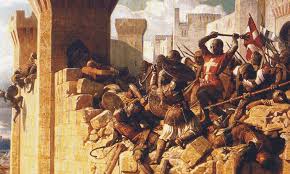 Good and bad from the Crusades: The Crusades played a prominent part in the exciting developments, which occurred in this period, although they were usually a cause, rather than the cause, of change. The developments were both beneficial and harmful. The Church gained great wealth. But wealth brought worldliness; the use of violence for a religious end and the association of religion with political and economic aggression troubled some thinking men; and the teachings of Byzantine philosophers weakened the faith of some Crusaders.
Good and bad from the Crusades: The Crusades played a prominent part in the exciting developments, which occurred in this period, although they were usually a cause, rather than the cause, of change. The developments were both beneficial and harmful. The Church gained great wealth. But wealth brought worldliness; the use of violence for a religious end and the association of religion with political and economic aggression troubled some thinking men; and the teachings of Byzantine philosophers weakened the faith of some Crusaders.
A Defensive War
“The Crusades could more accurately be described as a limited, belated and, in the last analysis, ineffectual response to the jihad — a failed attempt to recover by a Christian holy war what had been lost to a Muslim holy war,” writes Bernard Lewis, the greatest living English-language historian of Islam (4). So let’s examine some of the myths propagated about the crusades.
Myth #1: The Crusades were wars of unprovoked aggression against a peaceful Muslim world minding its own business.
The truth is that the Crusades were a reaction to 500 years of Muslim aggression into dominantly Christian countries. The Crusades were in essence a defensive action against the spread of Islam by the sword. They were undertaken largely out of concern for fellow Christians in the East. In fact, many great saints supported the Crusades, including Bernard of Clairvaux, Thomas Aquinas, and peace-loving Francis of Assisi. Troops prayed and fasted before battles and praised God after them. Even many Muslim respected the ideals of the Crusaders.
Of course, there were sins of overreactions by some Crusaders. But most of these were deeply regretted and forgiveness was sought by Christians who participated in them. Unfortunately, this was not so for Muslim exploiters who felt little remorse but looked to a future in Paradise as a reward for their endeavours in stomping out the infidels.
Myth # 2: The Crusades were colonialist imperialists after booty and land.
This charge is contrary to the facts of history. Most Crusaders undertook the 2000 mile trek at great sacrifice of their own wealth. Many sold or mortgaged their own homes, most of which were not recouped. Most never occupied the land they gained from the Muslims. They went out with a sense of duty to God.
Myth # 3: When the crusaders captured Jerusalem in 1099, they massacred ruthlessly.
This criticism is overstated. Of course, people were killed, but it was not ruthless. It was usually in accord with the norms of war for that time. Cities that resisted were captured and subjugated to the captors, but inhabitants of cities that surrendered were not killed. However, the people who surrendered most often retained their property and worshiped freely (see SALVO, issue 27 [Winter, 2013], pp. 60-62).
The Perversion of the Crusades
If this is so, then why do most people today have a distorted view of the Crusades? It was not always so. During the Middle Ages nearly all Christians in Europe believed the Crusades were morally justified. The modern distortion of the Crusades began with French humanist Voltaire (1694-1778) who abhorred Christianity (see his Philosophical Dictionary). The contemporary anti-crusade stance was set by Sir Steven Runciman, A History of the Crusades (1951-1954) and popularized by a BBC/A&E documentary (1995).
Only recently has this negative attitude begun to be corrected. Professor Rodney Stark is a case in point. He wrote, “Not only had the Byzantines lost most of their empire; the enemy was at their gates.” Hence, “the popes, like most Christians, believed war against the Muslims to be justified partly because the latter had usurped by force lands which once belonged to Christians and partly because they abused the Christians over whom they ruled and such Christian lands as they could raid for slaves, plunder and the joys of destruction (2).”
References
(1) Dr. Norman L. GeislerGeisler: The Crusades: Were they Justified? 2015, http://www.normgeisler.com/articles/Ethics/CrusadesJustified.htm
(2) Rodney Stark, God’s Battalions: The Case for the Crusades (HarperOne, 2009), pp. 33, 248)
(3) Thomas F. Madden, The New Concise History of the Crusades, Lanham, MD: Rowman & Littlefield. 2005).
(4) Dr. Bernard Lewis: Jihad vs. Crusade, A historian’s guide to the new war
(5) A.A. Grishin, Knights Templar Vault: Quote from al-Arabi About Christians in Palestine, http://knightstemplarvault.com/category/quotes/

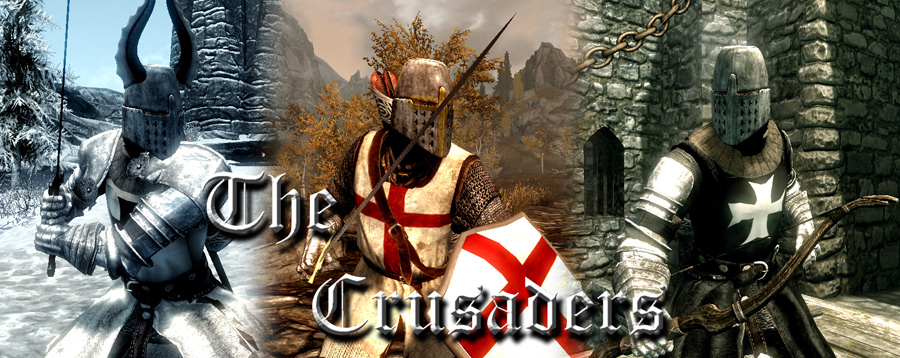
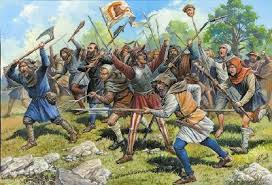
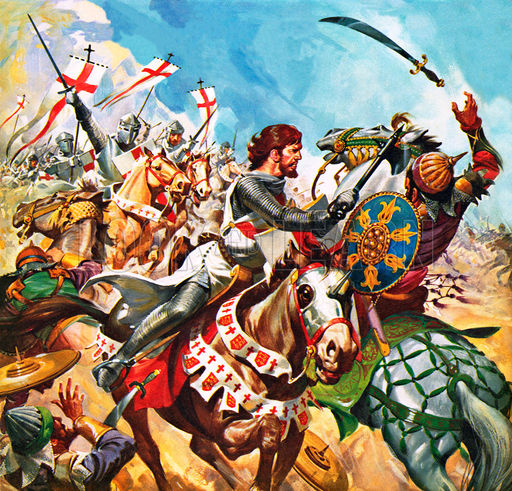
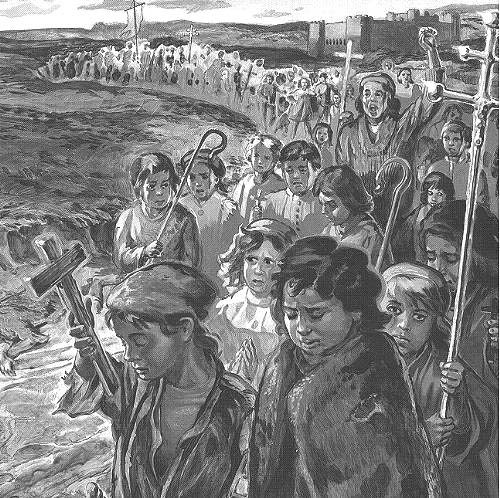
Recent Comments